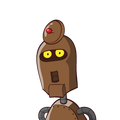-
Table of Contents
Navigating Copyright Laws in the Age of AI-Generated Content
As artificial intelligence (AI) continues to evolve, it is increasingly being used to generate creative content, from music and artwork to literature and journalism. This raises complex questions about copyright law and ownership. Who owns the rights to AI-generated content? Can AI creations be copyrighted at all? This article explores these questions and provides guidance on navigating copyright laws in the age of AI-generated content.
Understanding Copyright Laws
Copyright laws are designed to protect the rights of creators, giving them exclusive control over their work and the ability to profit from it. However, these laws were established long before the advent of AI and are based on the assumption that a human is the creator. This assumption is challenged by AI, which can generate content independently of human input.
AI and Copyright: A Legal Gray Area
AI-generated content falls into a legal gray area. In many jurisdictions, for a work to be eligible for copyright protection, it must be created by a human. For example, in the United States, the Copyright Office has stated that it will only register works created by human beings. Similarly, in the UK, the Copyright, Designs and Patents Act 1988 stipulates that copyright only subsists in original literary, dramatic, musical or artistic works, implying human authorship.
Case Study: The Monkey Selfie

A famous case that highlights this issue is the “monkey selfie” dispute. In 2011, a macaque monkey in Indonesia took a selfie using a camera owned by photographer David Slater. When Slater claimed copyright of the photo, PETA sued on behalf of the monkey, arguing that it should own the copyright as the creator of the photo. The court ruled in favor of Slater, stating that non-human animals cannot own copyright. – Detailed reading about The Monkey Selfie Dispute
Implications for AI-Generated Content
The “monkey selfie” case suggests that AI-generated content may not be eligible for copyright protection. However, this leaves open the question of who owns the rights to such content. Some argue that the creator of the AI should own the rights, while others suggest that the user who operates the AI should be considered the creator. There is also the question of whether AI-generated content should be considered public domain.
Example: AI-Generated Art
In 2018, an AI-generated painting sold at Christie’s auction house for $432,500. The painting was created by an AI developed by the French collective Obvious. The collective claimed copyright of the painting, but this has been disputed by other artists and legal experts.
Navigating Copyright Laws in the Age of AI
Given the legal uncertainty surrounding AI-generated content, it is important for creators to take steps to protect their rights. This may include:
- Seeking legal advice before using AI to generate content
- Clearly defining ownership rights in contracts when using third-party AI
- Keeping detailed records of the creation process to demonstrate human involvement
Conclusion
The rise of AI-generated content presents new challenges for copyright law. While current laws may not provide adequate protection for AI-generated content, it is important for creators to understand their rights and take steps to protect their work. As AI continues to evolve, it is likely that we will see changes in copyright law to address these issues. Until then, navigating copyright laws in the age of AI will require careful consideration and legal guidance.






Leave a Reply